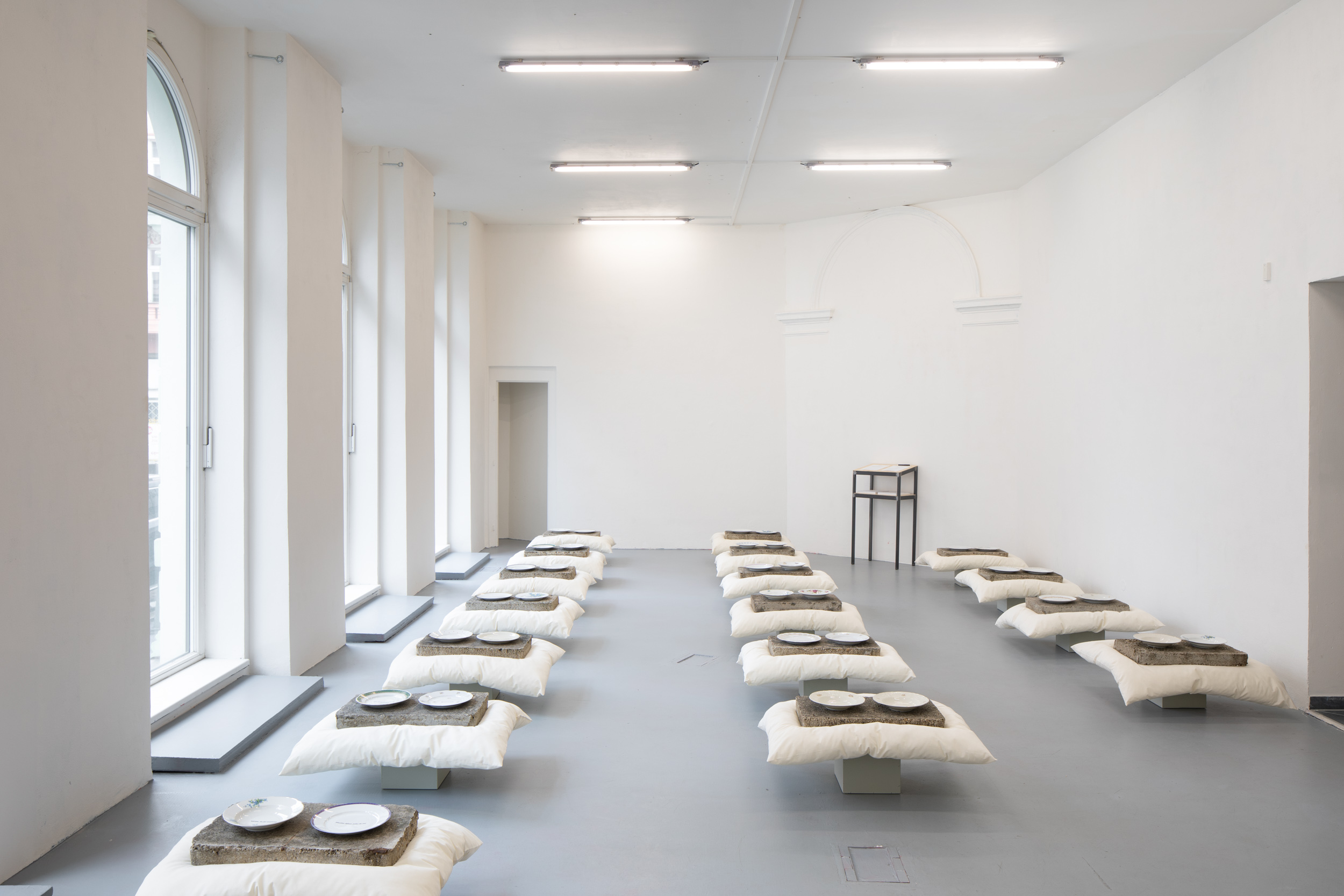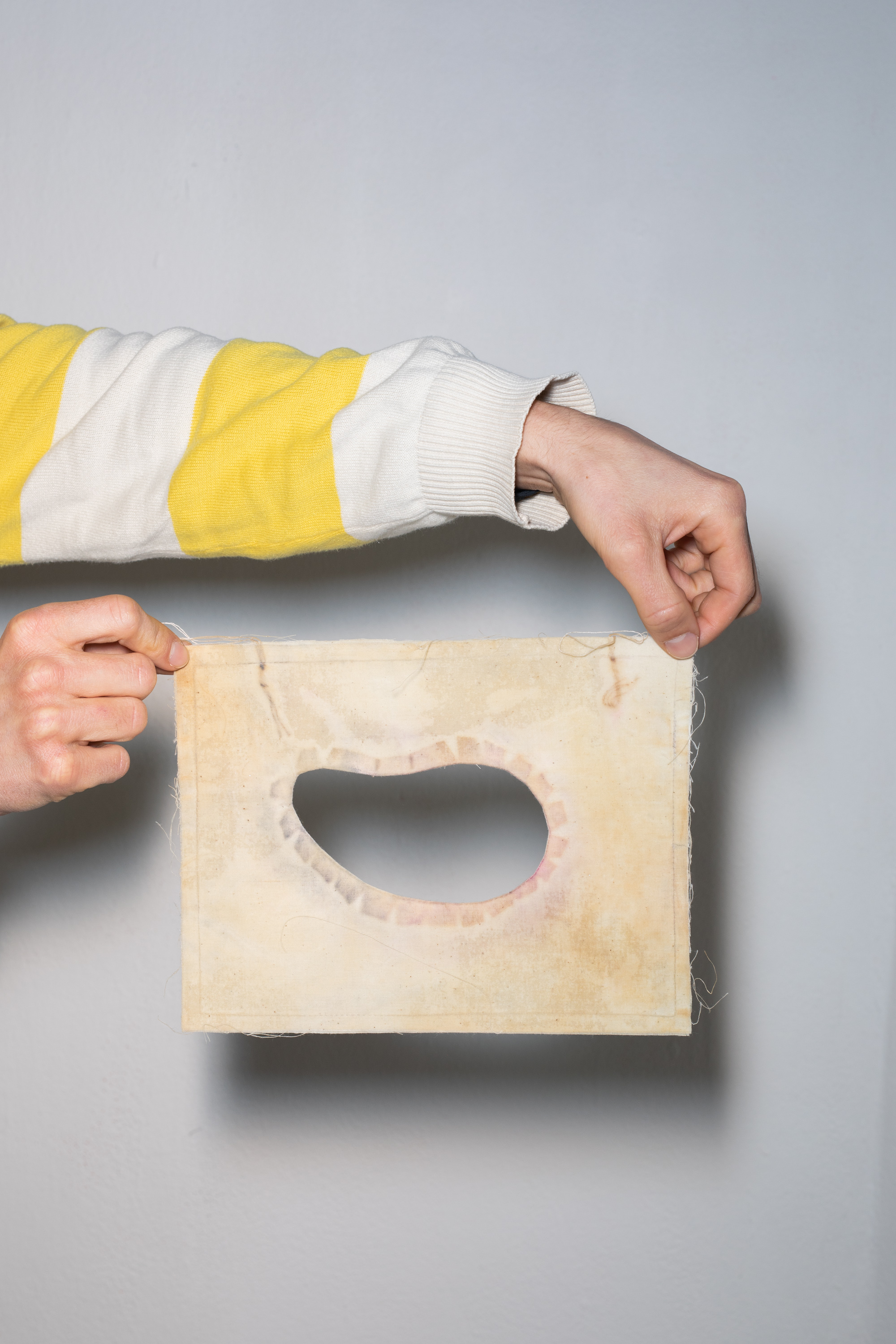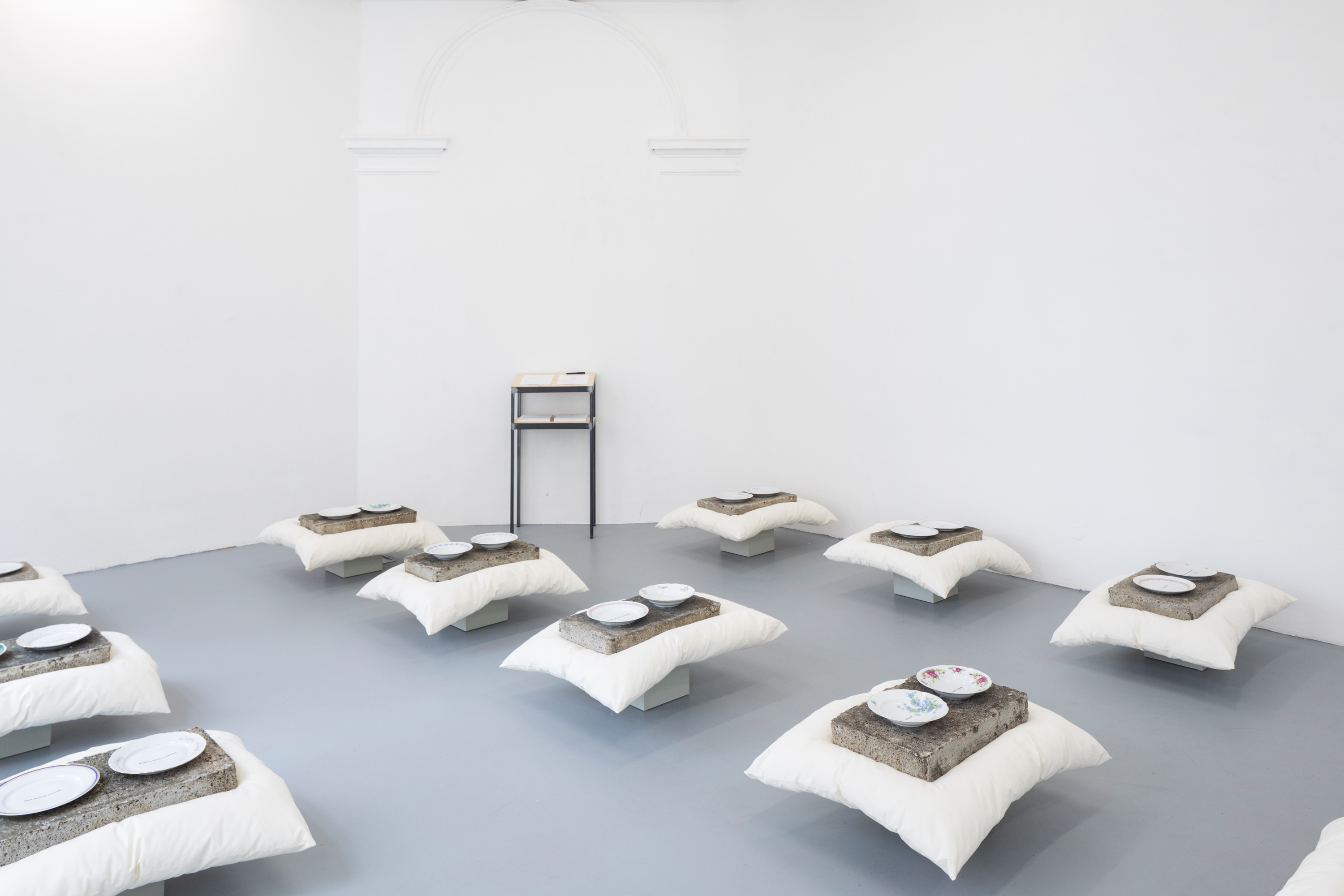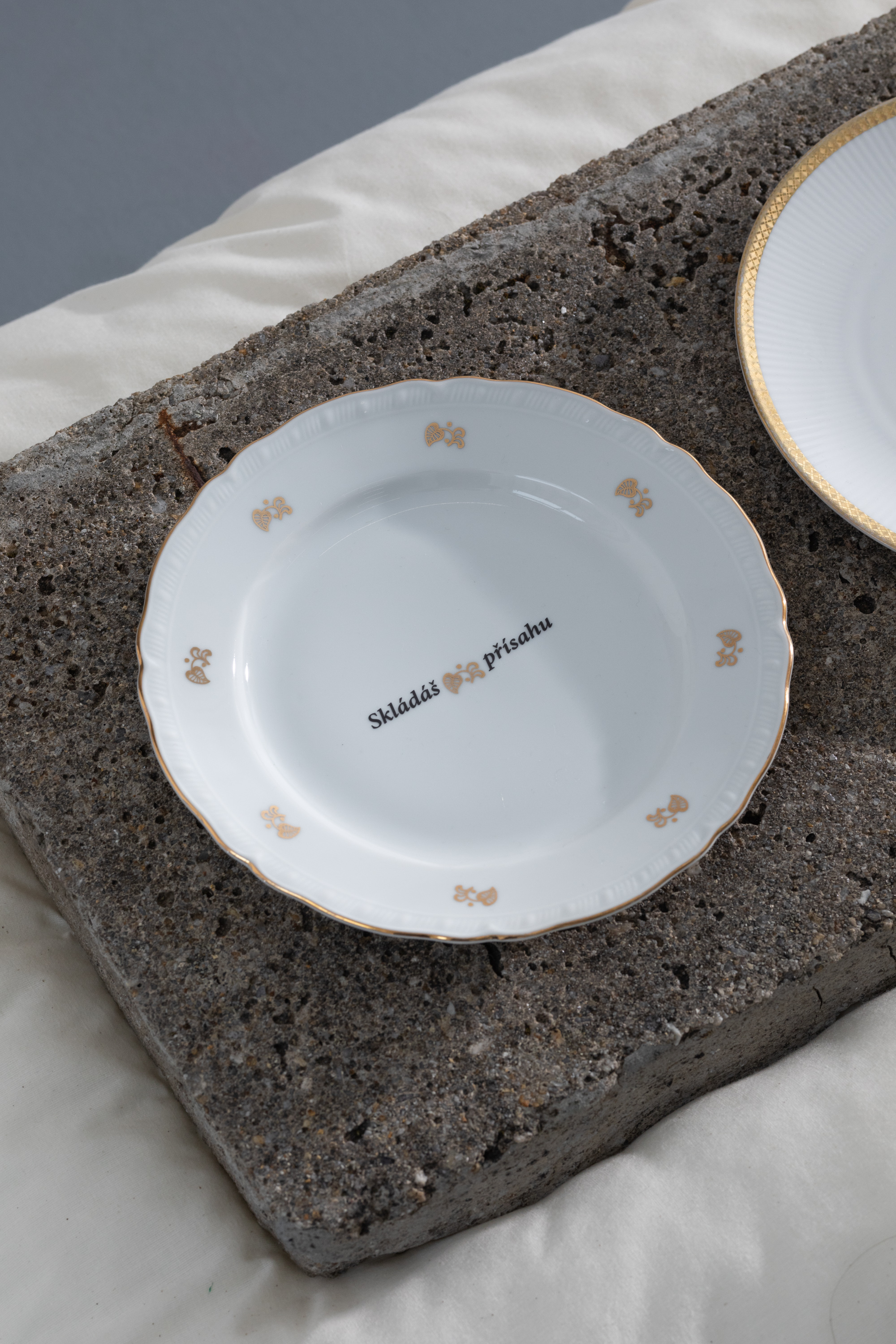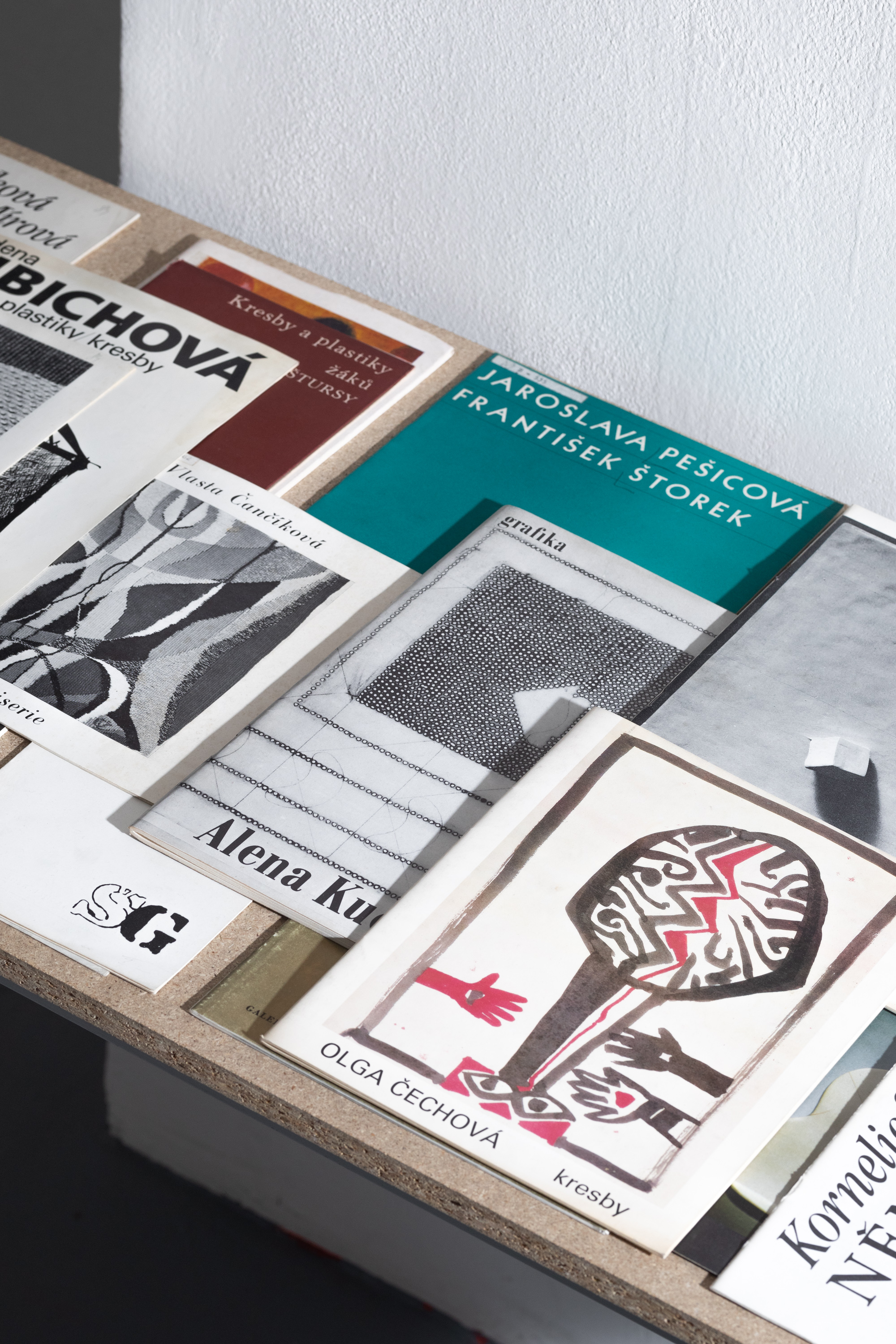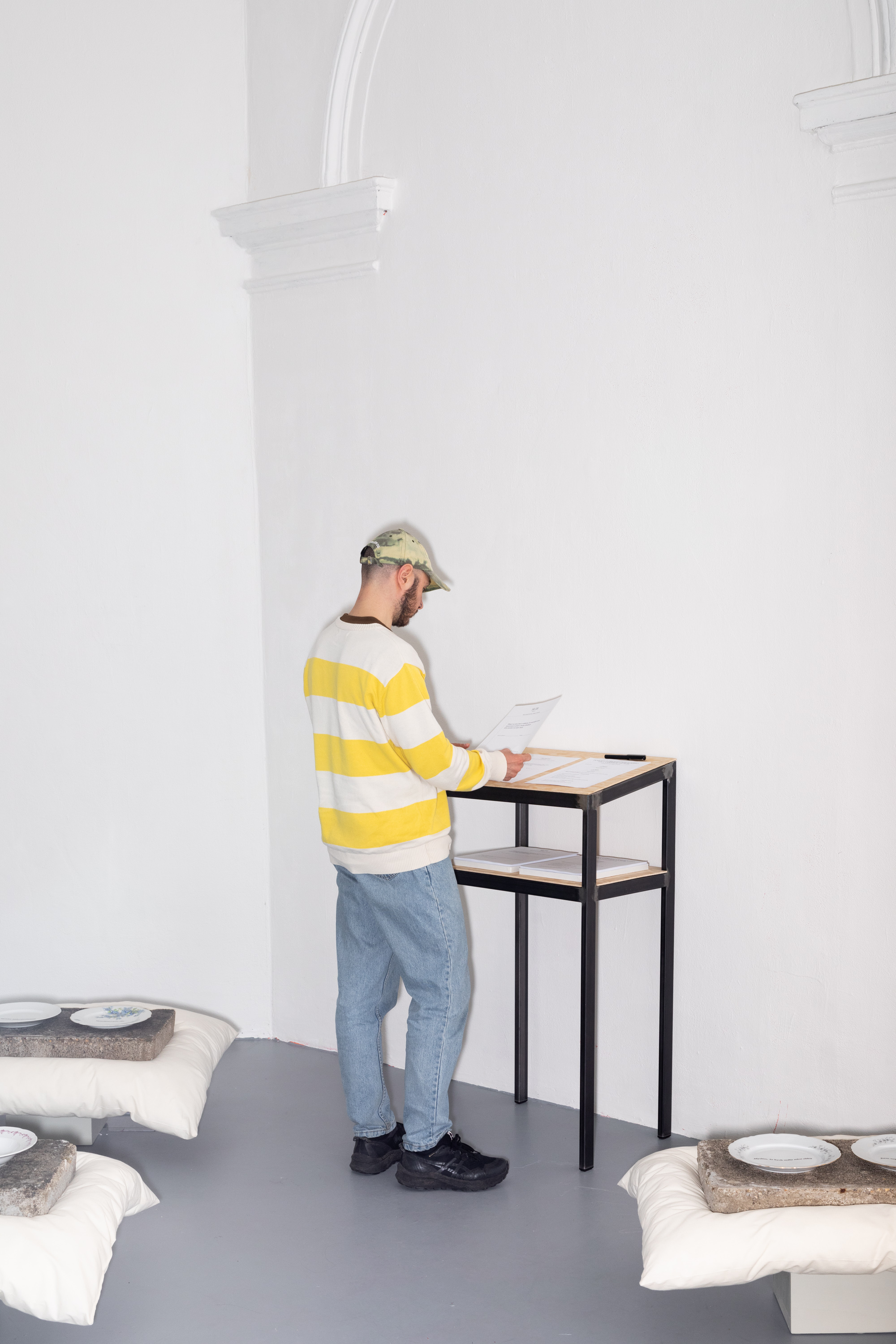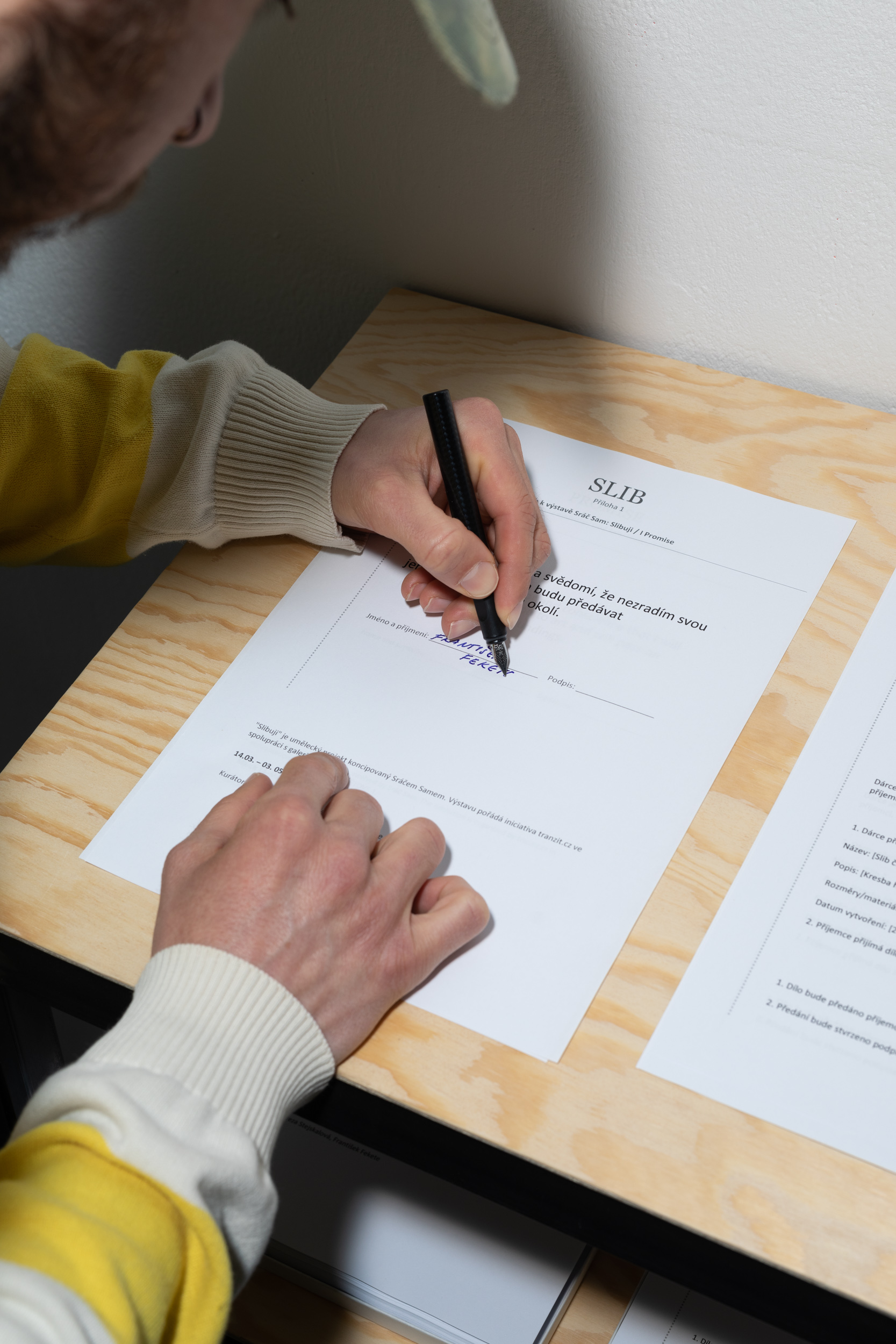Sráč Sam: I Promise
Solo exhibition of the Czech artist Sráč Sam is organized by tranzit.cz and curated by František Fekete and Tereza Stejskalová
The exhibition takes place at the SVĚTOVA 1 Art Space
Sráč Sam – I Promise, 2025, participatory installation, SVĚTOVA 1 © Jonáš Verešpej
Sráč Sam’s exhibition project I Promise shows art as a story that focuses on ordinary things and everyday relationships. In such art, one does not perform great accomplishments in spite of the circumstances; what is important here is the relationship to the needs and existence of others. The exhibition is organized by the tranzit.cz initiative and takes place at the SVĚTOVA 1 gallery. The public opening of the exhibition will take place on March 14, 2025, and the exhibition will run until May 10, 2025. The exhibition is curated by Tereza Stejskalová and František Fekete and admission is free of charge.
The installation of pillows, concrete blocks, and plates with texts shows art as a story that focuses on ordinary things and everyday relationships. In such art, one does not perform great achievements in spite of the circumstances; what is important here is the relationship to the needs and existence of others. In it, the boundary between the artistic and the applied dissolves. In this way, Sráč Sam follows the tradition of the artistic practice of Czechoslovak women artists who explicitly or implicitly criticized socialist society through objects relating to invisible and socially devalued domestic work.
The participatory part of the project consists of one hundred original artworks. These works will be donated to visitors in exchange for making a pledge. This promise will be the same for all; it is a symbolic declaration to give art one’s attention. The fulfillment of the promise and its interpretation, however, are left up to the audience. With this gesture, the artist expresses her trust in them, and with this attitude she creates a specific case of a social, ethical art economy based on attention and trust.
Sráč Sam’s artistic practice interconnects personal and collective experiences. Interwoven with themes of restraint, trust, and promise, her work creates a space for reflection: How can art cope with the realities of life and societal expectations? She reminds us of hidden and forgotten works but also shows us that art is always about us, our relationships, and what we are willing to promise and accept.
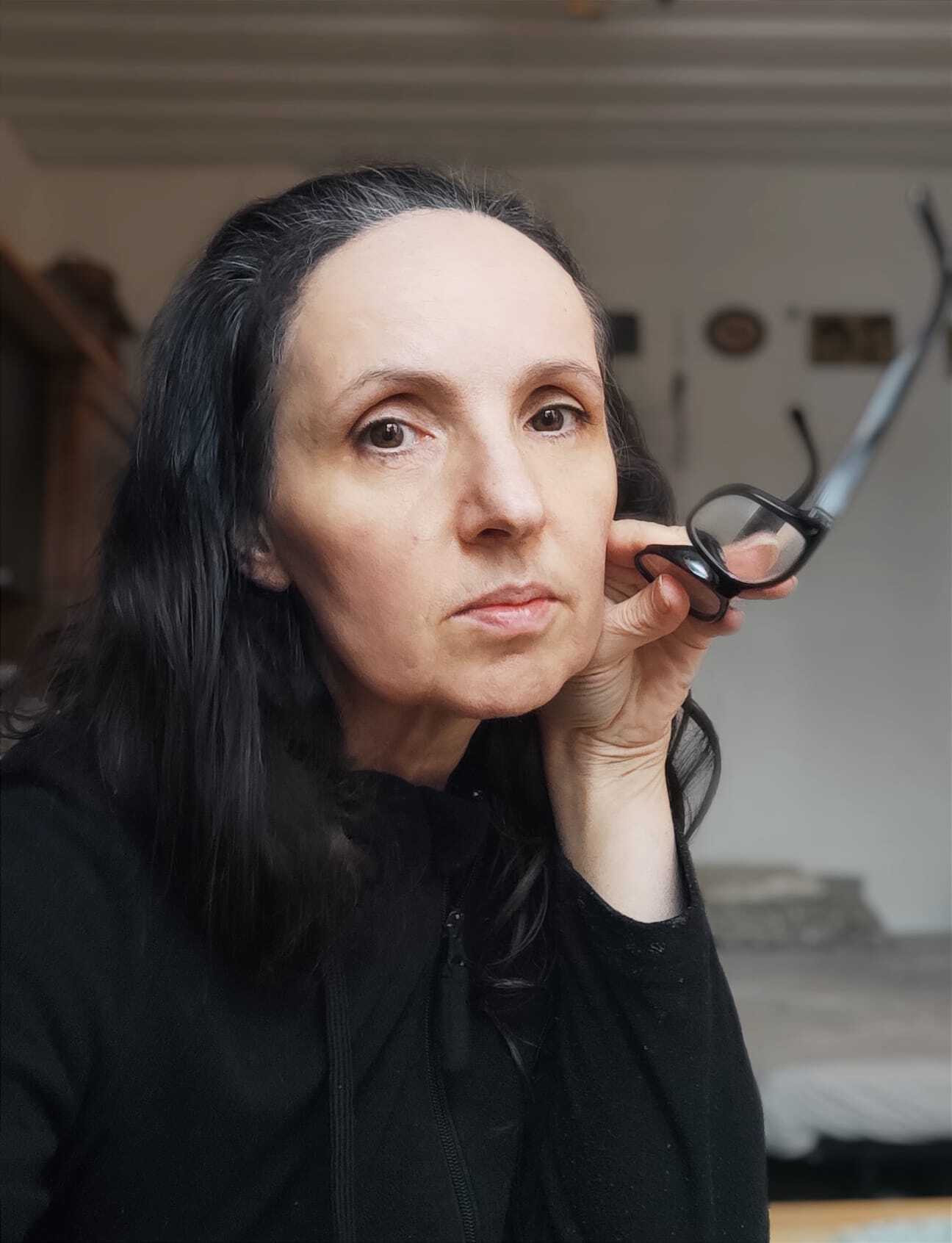
Sráč Sam, courtesy of the artist
Sráč Sam (*1969) is a visual artist, curator, and organizer who lives and works in Česká Bříza. In her work, she rethinks linguistic, visual, and social patterns. She founded the gallery sam83, organizes the residency project Artist in Cottage, publishes the independent magazine PIŽMO, and has published the texts Vanda, Kuniba Likes Things Three Times, and My Husband’s Fear. By setting her own socioeconomic models, Sráč Sam is one of the artists who anticipated the ethical turn in art.
EVENTS
Exhibition Opening: Sráč Sam – I Promise
The Necessity for Community Coexistence: Artist Talk with a Discussion and a Screening
Guided Tour of the Exhibition “I Promise”
A Trip to the sam83 gallery: A Visit to Česká Bříza with a Spring Program and Food by sam83
Guided Tour of the Exhibition “I Promise”
CURATORIAL STATEMENT: The Restraint and Trust of Sráč Sam
Briefly and succinctly presenting the life and work of Sráč Sam in words is limiting. Sráč Sam is an artist, curator, mother, chef, social activist, and much more. The individual results of these activities are hard to differentiate from one another. On the other hand, restraint is a crucial aspect of both her artistic work and the cultural infrastructure she has centered around herself since the 1990s. Restraint is not only a creative strategy but also a necessity in an age when art is expected to be ethically responsible. Sustainability and the limiting of material consumption are central aspects of the degrowth of artistic operations—something that Sráč Sam is one of the first in our region to fulfill. The choice of materials and their recycling or the perception of time shared as the highest value are a policy of sorts for Sráč Sam.
We don’t want to be ashamed of anything, and we don’t want to leave anything behind.
Restraint is thus an interpretive key for a more general understanding of her work. In the exhibition we find ourselves in, it materializes in the form of objects whose life does not end here. The concrete blocks were taken from and will be returned to their function as a building material at the cottage Javor, which in the future will serve as a space for artist residencies in the countryside. The pillows will prop up the dreams of tired but contented cultural workers. And the plates will remind us, as we dine together, of the fundamental and indivisible sources of energy for human life, sustenance, and poetry.
The second fundamental aspect of Sráč Sam’s work is the trust with which she approaches collaboration and the audience. In the present exhibition she invites visitors to promise to pay attention to art, in return for which they will receive an original work—a limited edition of one hundred pieces. The fulfillment of the pledge and its interpretation, however, are left up to the audience. But it’s not the same as receiving the work for free, for a promise inherently creates a form of trust, and we can understand it as a mutual investment whose value cannot be reduced to money. The relevance of the commitment we make lies precisely in the acceptance of a personal responsibility toward art, whose parameters we set ourselves according to our own conscience.
Nearly opening infinities (with less).
The installation of pillows, concrete blocks, and plates with texts alludes to a long-standing interest in women artists, whose work and everyday realities are often obscured by the unyielding weight of history. We can find artists who are invisible, hidden, obscured, or forgotten. The audience can acquaint themselves with this research in the second part of the exhibition, where archival catalogs and monographs are presented for study. Within them we find an oeuvre and a life that have their value, even in shades of visibility that must be reached through personal attention and interest.
Sráč Sam’s exhibition project I Promise depicts art as a story that focuses on ordinary things and everyday relationships, dissolving the boundary between the artistic and the utilitarian. Sráč Sam thus follows the tradition of Czechoslovak women artists who explicitly or implicitly criticized socialist society through objects related to invisible and socially devalued domestic work (for example, Naděžda Plíšková, Zorka Ságlová, and so on). In such art one does not perform great feats despite the circumstances; what is important here is the relationship to the needs and existence of others.
In the exhibition, the tension between art and caretaking emerges through the promise and commitment. By making a promise we commit ourselves to the society around us, to ourselves, or to others, but we also weigh our promises to each other. We may have made a promise to ourselves that is at odds with a pledge made to others. Women artists in the twentieth century were often confronted with this situation. On the one hand, there was the societal commitment to motherhood, marriage, and caretaking, which could be seen as either fulfilling or oppressive, full of reciprocity or alienating, and often both at the same time. On the other hand, there was the commitment to create, which was often no less compromising. But we only have one body. It writhes under the weight of shopping bags and the fatigue of sleepless nights—because where can we find the time and space to create, to think? A promise, after all, is not just about the vow but about the context in which we make it. Maybe it was never even possible to keep it in the first place. A promise is about a relationship and relationality. A promise can be oppressive, but it can also be liberating—that’s what Sráč Sam is trying to tell us.
When we browse through old catalogs or monographs for a few minutes and see a life and work that has unfolded over several decades, it is a strange feeling. Despite the weight of an everyday life defined by taking care of a family, these lives were lived, these works were made, they are here somewhere to be seen. They are always recorded in time, even if they are obscured. But the emotion can also be tinged with a certain bitterness from the stories that have gone unheard and the wrongs that have gone unrighted.
The texts on the plates are an important part of the exhibition. Their reduced and incisive form is combined with the limitlessness of the poetics, whose interpretation is entrusted to the audience. It is the reductive form of the texts as well as their visual morphology that define Sráč Sam’s poetics—precision and at times a certain severity, but often with humor. The sentences found on the plates are a curated collage of texts by Sráč Sam, selected and arranged by František Fekete. They are always diptychs. Beneath their seemingly civil contents hide bubbling emotions. Each couplet contains a hint of a relational dynamic or a dialogue (although it is not clear whether it is a dialogue between you and me or an inner monologue). It is a union of opposites; we can imagine it as yin and yang.
Sráč Sam’s artistic practice interconnects personal and collective experiences. Interwoven with themes of restraint, trust, and promise, her work creates a space for reflection: How can art cope with the realities of life and societal expectations? She reminds us of hidden and forgotten works but also shows us that art is always about us, our relationships, and what we are willing to promise and accept.
The exhibition is organized by the tranzit.cz initiative in cooperation with the SVĚTOVA 1 Art Space. The main partner of tranzit.cz is the ERSTE Foundation. The year-round activities of tranzit.cz are supported by the Ministry of Culture of the Czech Republic, the City of Prague, and the State Culture Fund.
